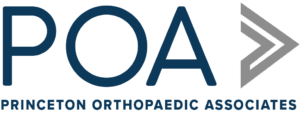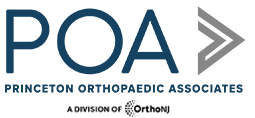
Book An Appointment
Physician Assistants
Physical & Occupational Therapists
KneeMRI ScansNon-OperativePhysiatry
Physical Therapy
Podiatry
Spine
Sports Medicine
TraumaUrgent Care
X-Ray Imaging

Shoulder pain is probably the most common physical complaints from people working in an office environment. It’s also one of the most annoying orthopaedic issues you can have simply because it makes tasks like combing your hair or putting on a sweater extremely difficult. Even with regular stretching and exercise, you may find that your neck and shoulder pain continues to get worse.
Neck and shoulder pain are both frustrating mostly because the pain that we experience in this area comes not only from our muscles but also from our posture and how we carry weight.
Let's look at some of the primary causes of this problem, how you can treat it at home, and what you should do if it persists beyond that point.

While many of the causes of shoulder and neck pain are obvious, there are also a few things that you might not realize are causing your discomfort. One of the biggest issues is muscle fatigue and overuse. Your muscles are part of a complex system that helps your body move and function day in and day out. When you overwork those muscles, they become fatigued and strained. They can also develop small tears and micro-tears that cause significant amounts of pain when you try to use them.
Another issue is tight muscles. We’ve all heard that we should stretch, but many of us don’t actually do it. When you ignore your muscles, they can become very tight and overworked. This can put significant strain on your joints and cause them to ache.
One thing we often forget is that sitting is not great for you. That's why many people have moved to using a standing desk. When we talk about the benefits of standing desks, we often focus on how they will help you lose weight and feel more energized. While these are very important benefits, they don’t address the other side of the coin. Standing desks are great because they take the weight off your back and shoulders. When you stand and work, your body has to support its own weight. This takes a significant amount of stress off of your muscles and joints.
When you sit, however, your muscles are forced to work much harder and much more intensely. This can cause significant amounts of stress and pain in your back and shoulders, which is why even if you have a standing desk, you still need to be careful of your posture.
Another source of neck and shoulder pain comes from carrying too much weight on one side of your body. When you’re carrying things around with you all day, you have to put an uneven amount of weight on one side of your body. This can cause serious stress in your hips, shoulders, and neck. It can also cause pain in your knees and ankles. If you’re having problems in one of these areas but can’t pinpoint a cause, you might want to take a look at how you’re carrying your weight. If you’re carrying too much on one side, you could be experiencing significant pain and discomfort as a result. If you carry a heavy bag or purse on one side, that could also cause a lot of pain. If you’re carrying something heavy, try to distribute the weight as evenly as possible.

In addition, bad posture is one of the most common causes of shoulder and neck pain, and it can be difficult to avoid. When you’re sitting, try to keep your shoulders back and your spine straight. When you’re standing, make sure that your weight is evenly distributed and that you’re not bending at the knees or hips. You may be more likely to develop pain if you have very long hours at your desk or if you have a job that requires you to stand for long periods of time. This is because your muscles can become fatigued and strained when you’re in one position for too long.
The most important place to start is at the very beginning which means an evaluation and diagnosis from a doctor. Catching a problem early means a better chance of your issue going away sooner than later. You might be able to treat it with stretching, better posture, and smarter lifting practices. We also have more long-term solutions such as physical therapy or surgery. If you notice symptoms of pain in your shoulders and neck, make sure that you schedule an appointment with us here at POA.
If you experience a muscle strain, it is important to take care of the injury right away. Try some of these home remedies for muscle strain to help speed up the healing process:



The best way to rehabilitate muscle strains is to try out some rehabilitation exercises. Rehabilitation exercises are used to strengthen the muscles around the injured site and promote healing and prevent future injury. Some of the most common rehabilitation exercises include:
These rehab exercises are designed to help your body heal itself and get back into shape after an injury. Rehabilitative exercises also serve as a preventative measure, which means they can be beneficial in cases where a person has experienced previous injuries or has certain health conditions that make them prone to injuries.
